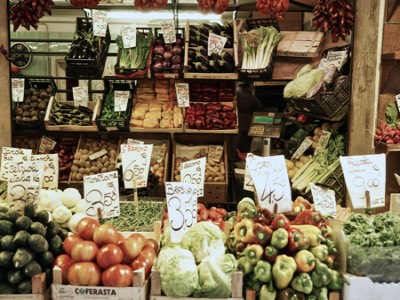
Online Direct Sales: Part 4
Today’s blog is the final in a four-part series on options and strategies for online direct sales of local farm products. In this edition, I will discuss online strategies for customer communication and relationship building.
Before I dive into today’s topic, I would like to spend a few minutes to update you on the continued growth in consumer interest in local foods and calls for a more localized food system across the country. Online sales and CSA subscriptions have sored in the last 45 days, with reports of increases in CSA subscriptions from 25-300% over last year (As Food Supply Chain Breaks Down, Farm-to-Door CSAs Take Off). One online sales platform, Harvie, which represents about 100 CSA/Food Hubs around the country, has seen a 200% increase since early March. Online sales of meat products have jumped as much as 500% (Going Local: The Case for Bringing America’s Meat Supply Closer to Home) and CSA managers are running out of egg and meat shares faster than the fresh produce shares. How long will consumer sentiment towards local foods remain positive? That is an excellent question. Some experts say that all will be back to normal post COVID-19 and others say that consumer sentiment will be forever changed (Growing an Appreciation for the Hands that Feed Us). For now, the current climate favoring local food providers makes this an excellent time to make you and your farm known in the community. They need you!!
Okay, now onto online customer communications. First, communicating with customers can be basic, through emails or newsletters, or more complex through scheduled social media postings. In any case, the online communications plan should be organized and well thought out. Last week’s blog covered the major social media platforms, which can be used for business promotion and sales, and to direct customers to your website as well. Basic communications should focus on farm products and services, customer appreciation and loyalty rewards, etc. You can post photos and videos of your products, chores, your property, animals, gardens, hoop houses, seasonal activities, such as planting or harvesting, new baby animals, your farmers’ market booth, etc. You can also provide basic educational messages, such as gardening tips, recipes, and seed saving.
Your online communications can also facilitate contests/promotions, discounts, etc. Customers will track your posts and read emails so that they have the opportunity to win products or purchase them at a special discount. I have often seen postings that say “The first 20 people that share this post will be put in a drawing to win two 8 oz steaks,” or “The first 10 people that show up to our farm stand and say “I love kale” will receive one bag of mixed greens for free.”
As many typical farm-based events (dinners, cooking classes, u-pick) are now off the table due to COVID-19, you can bring these events to your customers through videos, such as cooking demonstrations, wine/beer pairings, home gardening how-to videos, and such. Posting videos to YouTube and then linking them to your social media pages and website is straightforward, especially when quality videos can be made now using a smart phone. As consumers are now buying more staples (fresh fruits and vegetables), rather than processed foods, and also purchasing products in bulk, cooking, canning, storing food, and similar topics are now relevant (What to do with 50 Pounds of Potatoes? The Quandaries of Bulk Buying). Posting articles, written by yourself or others, and blogs on topics of interest to your customers will keep them engaged with your farm.
All in all, about one-third of your communications should be about your farm, products, etc. Another one-third should come from other sources, post shares, articles etc. from elsewhere. The final one-third should engage with customers directly, such as responding to questions and comments, re-posting, etc.
That’s all for now. Stay healthy!
Kynda Curtis, USU Extension Ag and Food Marketing Specialist
kynda.curtis@usu.edu
Marketing In Motion Blogs
Online workshops, courses, webinars, and podcasts:
- Washington State University Food Systems Webinars: https://foodsystems.wsu.edu/events/
Resources:
- USU Extension COVID-19 Resources: https://extension.usu.edu/covid-19/
- USU Extension Best Practices Guide for Utah Farmers Markets: https://extension.usu.edu/covid-19/best-practices-guide-for-utah-farmers-markets
- Marketing in Motion Blog posts: https://extension.usu.edu/apec/news/
- UDAF Utah’s Own Program: https://www.utahsown.org
- Taxes and Federal Programs: https://ruraltax.org
Disclaimer: This blog is for information purposes only. USU Extension does not endorse any specific product or service that may be mentioned here in.

